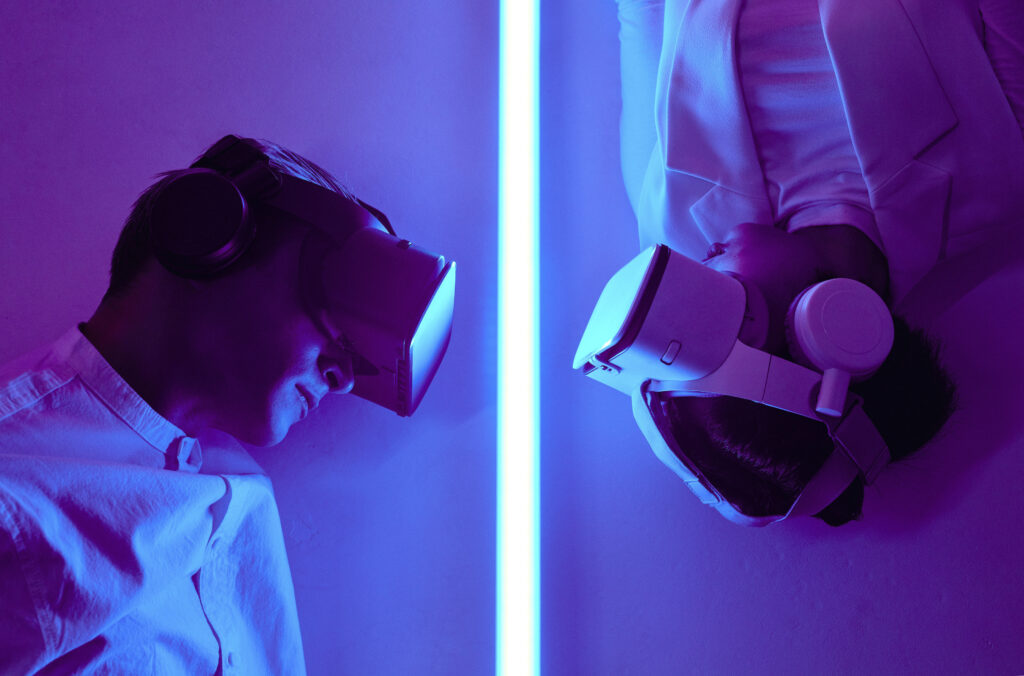
Artificial Intelligence (AI) and Machine Learning (ML) technologies have seen an unprecedented rise across many sectors and fields in the past few years. AI has made major progress in healthcare, finance, education, transportation, security, and, undoubtedly, broadcasting. Especially so in how sports broadcasts are delivered.
The world of sports broadcasting is constantly changing and evolving. Every year new technologies are introduced and adopted by broadcasters to keep up with the growing demands of sports fans for quality content.
Revolutionary advancements in AI and ML technologies have already changed and improved how sports events are covered and broadcasted. The audiences are now presented with more engaging, personalised, and optimised sports content thanks to AI. But how exactly does AI help broadcasters cater to the growing demands of sports fans in terms of quality content? How has the sector adapted to the new reality, where the presence of Artificial Intelligence is as prominent as ever? In this article, we explore the game-changing impact of AI on sports broadcasting, touching upon key developments from various perspectives.
First Things First: Artificial Intelligence vs Machine Learning

Often used interchangeably, AI and ML are, indeed, closely connected. Artificial Intelligence refers to the ability of a computer to create, memorise, understand and recognise patterns and make choices adapting to change and previous experience, similar to human fashion. It is basically computers behaving like humans.
Machine Learning is a subset of Artificial Intelligence; it is its application. With algorithms and statistical models, a machine can learn on its own to perform tasks without being programmed, using samples or so-called ‘training’ data. Essentially, it is in the name itself — machines learning from and by themselves.
Revolutionising Sports Broadcasting
As viewership preferences shift, broadcasters must stay on top of things and adopt new technologies to keep fans engaged. Although very new, AI has already significantly changed the way sports events are delivered, unlocking new possibilities for broadcasters. Many broadcasters have been employing AI and ML to streamline content production and deliver unique and personalised content to audiences worldwide. With AI and ML, many broadcasting problems can be minimised or even solved, making sports production more efficient.
Artificial Intelligence and Machine Learning in Action

AI can assist sports broadcasters in catering to the audience in many ways. AI-powered camera systems, for example, can track players in real-time, presenting live visualisations for a better understanding of the game’s dynamics. Machine learning algorithms can be employed to predict audience preferences, facilitating personalised content delivery for enhanced viewer satisfaction. Those systems are capable of detecting live audience responses such as clapping, and facial expressions, thus highlighting and broadcasting the most exciting and interesting parts of a sports event. These solutions use gesture recognition and crowd noise to identify highlight-worthy videos to present to the audience.
Another aspect where AI and ML have been prominent is in improving the overall commentary delivery, providing commentators with real-time data for more accurate and vivid presentations to the viewers.
IBM, for instance, has developed its own platform to deliver AI-generated commentary for Wimbledon highlights. The fans could add both spoken narration and closed captions for each reel, making the experience much more accessible and immersive.
Similarly, the power of AI and ML benefits visual storytelling. Many sporting events use sophisticated systems of dynamic tracking and real-time data to create more engaging content for viewers. Broadcast technology company Quidich Innovation Labs, for example, used a system called Quidich Tracker (QT) to track cricket players in real-time and present a 3D model of the field and players on the screen to provide a better understanding of the game dynamics.
That created more relevant and targeted content and, thus, a more engaging experience for viewers.
Sports Data Analysis and Performance Optimisation
The impact of AI goes beyond the viewing experience. Through advanced data analysis, AI can provide sports professionals with invaluable insights. Coaches and analysts can optimise team performance, devise winning strategies, and improve overall player efficiency. This data-driven approach benefits teams and also enhances fan discussions and engagement around the sport.
Because assessing the performance of teams and players can be challenging, AI models can be of great help. One interesting example of using this technology is an ML model trained through AWS Amazon SageMaker. This model analysed and compared goalkeeper performances in the Bundesliga. Considering factors like positioning and reaction time, the model provides a comprehensive analysis that helps coaches, analysts, and fans gain valuable insights into goalkeeper performance and make data-driven decisions. The use of such machine learning models as AWS enhances the accuracy and efficiency of performance evaluations in professional football.
We have partnered with AWS in the past to improve our services – read more about this amazing success story.
Immersive Sports Experience with VR and AR

AI-driven virtual reality (VR) and augmented reality (AR) technologies have unlocked previously unknown immersive experiences for sports fans. By integrating AI algorithms with VR and AR platforms, broadcasters can offer virtual stadium visits, interactive player profiles, and 360-degree game highlights. These innovations cater to the growing demand for engaging and interactive content, captivating audiences on a new level.
It is now possible to enjoy sports from the comfort of your home. Broadcasters can use 3D graphics to enhance replays and live gameplays, taking the sports experience to a whole new level. Multiple sports channels are already incorporating this technology in their broadcasts. Fox Sports, for instance, have used AR as part of their broadcasting for highlights and play-by-play analysis of basketball matches, adding information and graphics on players in real-time. Already in 2016, NBC Olympics offered a VR experience to the fans, allowing them to immerse in and experience the games with a 360-degree view.
Streamlining Sports Broadcasting and Content Creation with AI
AI and ML contributed significantly to sports broadcasting by automating traditionally labour-intensive and effort-consuming tasks. AI-based automated production workflows have made sports broadcasting not only more effective but also more cost-effective.
Previously, producing a compelling sports broadcast required large camera crews on-site and another analysts team responsible for summarising content, presenting play-by-plays, and replaying key moments of a sports event. This requires both large financial and human resources.
Today, with the help of AI, many tasks can be automated and the cost of those tasks minimised. New intelligent systems can not only generate visuals but also, with the help of facial recognition, audio detection, optical character recognition, and other computer models, deliver accurate visual data. In other words, these systems can analyse and generate compelling images, making sports coverage more interesting and interactive.
By automating some of the content creation processes, broadcasters can deliver live updates and coverage across various platforms in real-time. This improves fans’ access to the latest news, scores, and insights, making them an integral part of the action, and making broadcasting less complicated and costly. Isn’t that a blessing?
The Future of AI and ML in Sports Broadcasting
The integration of AI into sports broadcasting has opened a new era of innovation and excitement for both the fans and the broadcasters. From AI-powered commentary to data analysis, and VR/AR technologies to automated content production, AI’s transformative impact is undeniable. For broadcasters, AI and ML are a new way of catering to the audience’s growing demands. For the fans, it is a way to immerse themselves in their favourite sports on a whole new level.
As technology continues to evolve, sports broadcasting will continue to benefit from AI’s ability to engage, entertain, and connect audiences worldwide. Some worry that AI might replace such important figures as sports commentators. However, others believe AI is here to assist, rather than rid people of their jobs. An ongoing discussion not only in sports broadcasting, only time can tell the true impact of AI and ML. But the influence of AI on many areas of our everyday lives is, surely, undeniable. AI and ML are here to stay and will continue to impact the way media is produced.
The question is, can the broadcasters keep up with the constantly evolving AI-powered technologies?